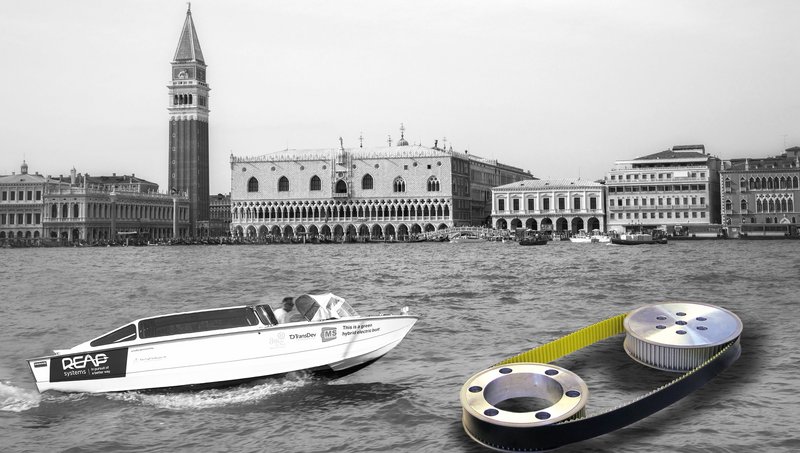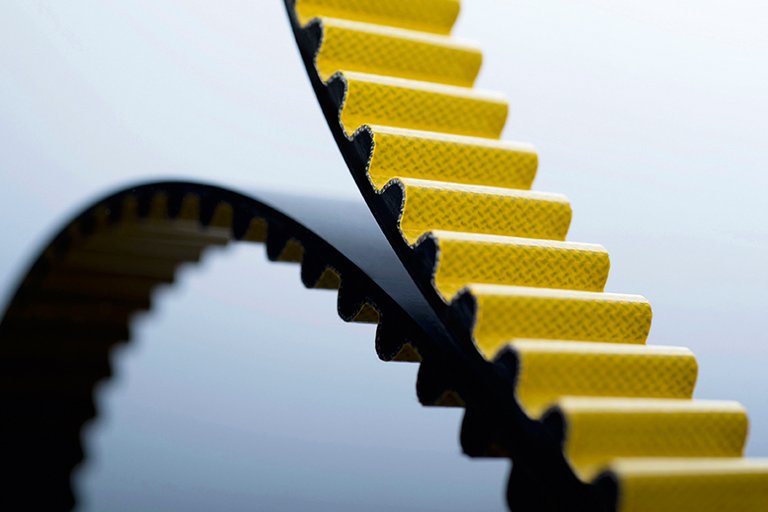Timing belts of ContiTech Drive Eco-friendly Water Taxis in Venice
- UK company develops hybrid drive for the city’s 550 water taxis
- A combination electric/diesel unit reduces noise, emissions and costs
- Heavy-duty ContiTech belt enables compact, lightweight engine design
Hanover, June 2017. Clean air for Venice – this is the target vision for the 550 or so water taxis plying the city’s lagoon and canals, using high-performance hybrid drives. The unit, developed by REAPsystems in the UK, is a simple drop-in retrofit for the boats, which are in operation for up to 20 hours a day and generate corresponding levels of exhaust emissions and noise. “The automotive industry is turning to environmentally friendly drives. It is only logical to further advance this development in marine applications,” explains Barrie Oldham, sales manager for industrial products at the ContiTech Power Transmission Group in England. “For the prototype of the hybrid drive, we are contributing our Synchrochain Carbon drive belt. Thanks to its carbon tension member, it offers up to five times more power than conventional belts with the same construction width. Accordingly, a clearly narrower belt can be used for the same required performance. The width can be reduced by up to 80 percent”. That enables compact, lightweight drives, such as the hybrid propulsion unit for Venice.
The concept is simple: When the taxis are traveling at low speed on the city’s canals, the clean, silent electric motor is used. For longer distances, for example when operating in the lagoon or going to and from the airport, the diesel engine takes over. This accelerates the boat to higher speeds, while at the same time charging the lithium-ion battery of the electric motor, which then functions as a generator.
In this way, the engineers aim to significantly reduce the water taxis’ noise and exhaust emissions, which represent a considerable nuisance to the residents, as well as harming the fabric of the historic buildings. Furthermore, the hybrid drive halves the boats’ diesel consumption and cuts maintenance costs. The new unit is to be unveiled in Venice later this year and then exhaustively tested in endurance trials.
“We hope to be able to convince the local authorities of the benefits of our drive solution for the environment so that the hybrid technology becomes the standard for the water taxis,” says engineer Dr. Dennis Doerffel, Chief Technology Officer at REAPsystems, in light of the local authorities’ efforts to cut the emissions of motorized vessels by means of new regulations.
The new drive was part-financed by crowdfunding. Donors had the option of attending the trials in Southampton, UK. “We are involving the public so that we can jointly kick-start the marine hybrid revolution,” says Doerffel.
In addition to private donors, the CTO has also acquired numerous companies as sponsors. These include TransDev UK, ContiTech’s UK sales partner, which supplied REAPsystems with belt pulleys, among other things, for the electric motor.
One of the features of the Synchrochain Carbon is its very high tear strength. It ensures clean, smooth and particularly reliable power transmission both at high torques and also with high dynamic loads. Thanks to its higher efficiency and quieter running and because it needs no lubrication or retensioning, the belt also offers many advantages over a chain drive, which it can replace.

Wolfgang Reinert
Head of Media & Public Relations
ContiTech

